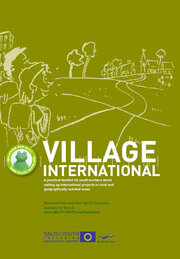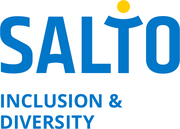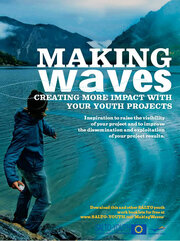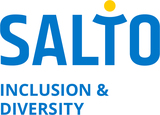Follow-up, dissemination and exploitation of results
What happens after an activity has to be planned before the activity!
Already when applying for funding (e.g. in a Youth in Action application), you are asked what you are going to do in terms of follow-up and dissemination of results. The point is that you do your project for a reason, to have some impact. And this impact should not stop as soon as the activity is over. Therefore, time should be allocated in your project planning to think about follow-up and dissemination activities.
You can undertake different activities or develop different tools to follow-up and to 'disseminate and exploit' the results of your project. Sending out the results of your project (e.g. a report, the lessons learnt, a CD-ROM, new methods,...) is one thing, getting them USED is even better. You will need to have a look at your project's potential to have an impact at an early stage - before you actually start the project!
Here are some questions that could guide you in your reflection:
- What do you want to achieve with your project? For whose benefit? (Objectives & beneficiaries of your actions)
- What do you think is worth showing (to others)? What are the likely results messages of your project (Products, outcomes from your project)
- Who should be impacted by the results of your project? (Target group of your actions)
- What kind of messages would be most effective for them? (Adapt your message or actions to the target group)
- What competences and resources do you have available in the organisation/group? (Available resources & competences)
- What do you need to do/collect during the project for your actions?And who does what? (Planning & division of tasks)
- What would all of this cost where do you get the time and money from (Budget & funding of the planned actions)
All these questions are interrelated. You should make a coherent link between the 'products and outcomes' of your project. This will determine, more or less, the scope of what you are able to achieve with your project and for whose benefit (objectives & beneficiaries). Depending on the 'Target Group' you want to reach, you will need to 'adapt your actions', the timing of the message sent out and the medium and format used. Your 'available resources and competencies', but also your preferences will determine what you are able to achieve. Last but not least, you have to be clear about 'who and how' you are going to ensure the follow-up, dissemination and exploitation actually take place, and have a look at what 'budget' you will need for this and where it should come from.
^^ top ^^
Here are some suggestions for follow-up and dissemination of your project results:
- Give recognition to the learning and personal development of the rural young people who took part in your activity. Give them a certificate or a letter of recommendation. Within the Youth in Action programme, participants are entitled to get a European YouthPass to document their learning and their experience (see www.YouthPass.eu).
- Think about organising a follow-up project after your first experience. Consciously involve some of the participants of the first project in setting up a second project, and try to make the new project better than the first one. Find out if there is other learning that you could continue with after the project e.g. learning a language, continuing international contacts and friendships, interest in a topic... Support your participants in doing so.
- Document the outcomes of your project: this can include both visible (e.g. theatre play, a CD-ROM, a report, a piece of art ,...) and invisible results (e.g. learning points, conclusions, recommendations, new methods used during the activity...).
- Think beforehand about who would be able to use the outcomes of your project, and adapt it to their needs, so that it will be very easy for them to start using what you have produced. Involve this target group in the development of your product.
- You could produce a 'rural youth work manual', which can be used by other youth workers in the same situation as you. However, make sure not to reinvent the wheel and integrate already existing documents into your work.
- Develop a strategy to show to the 'outside' world the great work you are doing. Who would you like to inform? How best can you inform them? What are the best channels to reach them? What is the best way of having an impact on them?
- Give participants the space within your activity to develop networking and follow-up projects themselves (through discussion, 'open space', action plans,...)
- If you have pictures or a video of the activity, have a special evening in the community centre or at the local youth club to share your experience with your colleagues, friends, community,... Involve the young people in organising and presenting.
- Offer guidance and training to young people who want to get more active in your organisation.
- Share your methods, funding opportunities, best practices to make the life of 'newcomers' in the field easier. Add them to existing databases (e.g. www.SALTO-YOUTH.net/Toolbox/) or circulate them via relevant networks (e.g. MIJARC or Rural Youth Europe).
- Use networking and communication tools for future contact and for the exchange of good practice e.g. via an online platform, blog, Yahoo or Facebook group, newsletters,...
- Get the local press involved and make the headlines with your international project... so that people talk about it for a while. You can link up to that success with positive PR work and future projects.
- Think about thanking people (authorities, funders, families...) for their contributions and keep up the new contacts established.
- Make your work sustainable and share your experiences within your own organisation and with other organisations (each project is a huge learning experience and you can learn from positive and negative features).
- ...
Find some inspiring examples of rural youth projects here
- SALTO has developed a booklet on how to create the greatest possible impact with your youth project, called 'Making Waves'. It contains lots of tips and tricks on how to increase the visibility, dissemination and exploitation of your project results.
- Download it below or from www.SALTO-YOUTH.net/MakingWaves/
Do you have any good (or bad) practice examples on how to enlarge the visibility and impact with your youth project? Add them below (log in with your SALTO username or create one to add comments) Thanx a million !
^^ top ^^
 www.salto-youth.net/
www.salto-youth.net/
VillageInternational/

 www.salto-youth.net/
www.salto-youth.net/
MakingWaves/ Protected from exclusion
Protected from exclusion
Downloads
The following downloads are available:
- Village International - setting up international projects with rural youth - 2007
A step by step manual through the different stages of setting up a youth project in your rural or geographically isolated area. With lots of practical tips and tricks. Based on SALTO TC Rural 2007. (Rightclick & download to your PC)
- Making Waves - more impact with your projects - 2010 update
Making Waves takes you on a journey to have the biggest possible impact with your youth projects: make them visible to the outside world and document your project results and make them USED by others. Make Waves - Have Impact !
